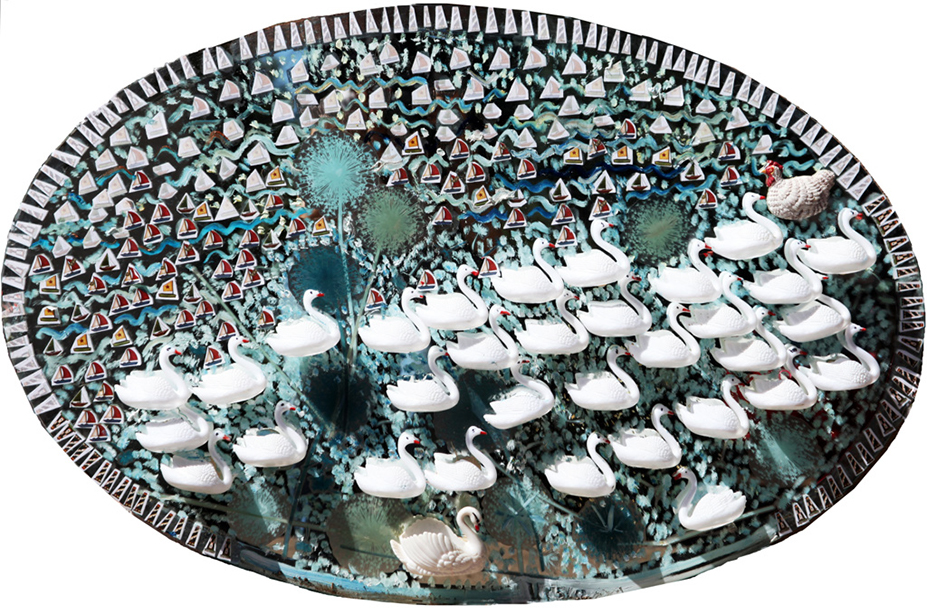Variations

Reality Check
Beauty is often expressed in comparison to a selected animal species; we often choose swan to indicate high level of excellence, against all practical values we ascribe to a domesticated hen. We may invoke a great many connotations to swans. Many think about dignity, beauty, duality, elegance, love, purity, grace, or even the royalty status while looking at a swan. We may think about visual connotations like those we may appreciate in the Art Deco, Art Nouveau, Jugendstil, or Secession styles, and also in furniture (for example, an Art Deco chair with figural armrests in the shape of silver-leaf swans or a decorative door), lamps, pottery and jewelry. Swan is present in literature written in ancient languages such as Sanskrit or Vedic, as well as in old myths, such as those about Leda – the queen of Sparta and Zeus in a disguise of a swan, and the birth of Helen of Troy resulting from this union. There are literary works; for example, the Danish poet and author Hans Christian Andersen (1805-1875) wrote a fairy tale “The Ugly Duckling” about a little bird, which matures into the most beautiful swan. The tale was illustrated by several artists and adapted to many kinds of media such as animations, films, and cartoons. Musicians presented their versions of swan-related notions, for example a “Swan Lake” ballet created by Russian composer Pyotr Ilyich Tchaikovsky (1840-1893), or the romantic opera “Lohengrin” by German composer Richard Wagner (1813-1883). There are a lot of stories and tales that have been blended into everyday language; people used to tell about a swan’s song, swan’s neck, or a swans white fluffed plumage and down (and swan down dresses). Bird migration and the sound created by departing of the whole flock had its continuation in the winged Polish husars’ (cavalry) formations, with big wings made of feathers. Coats of arms many times included an image of a swan. Many times we can see a logo with a swan (e.g., Svarovsky’s crystals). We have various ways to understand a pure beauty: physical features, moral values such as bravery, loyalty, truthfulness, or aesthetic values. We have different preferences for animals that possess most of these qualities. We often depict them in action happening in its surroundings, as an individual and within a group.